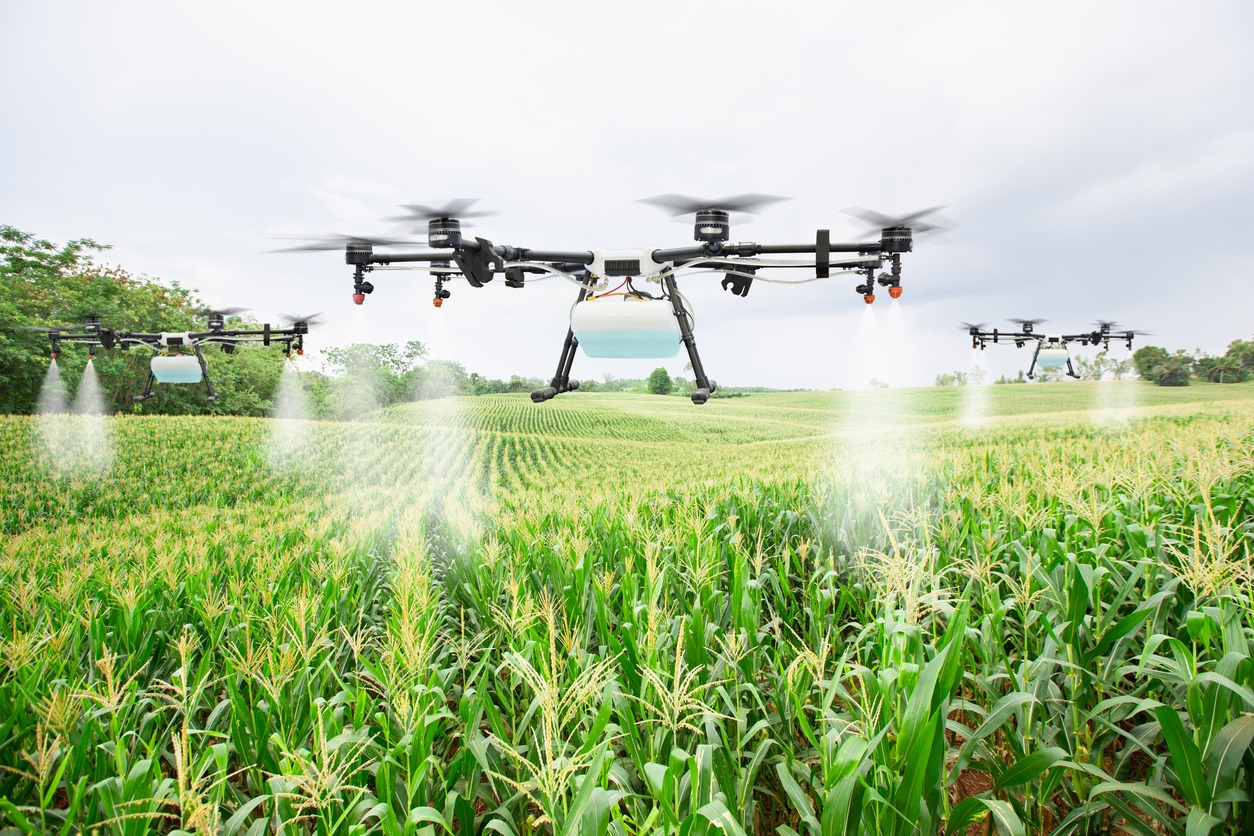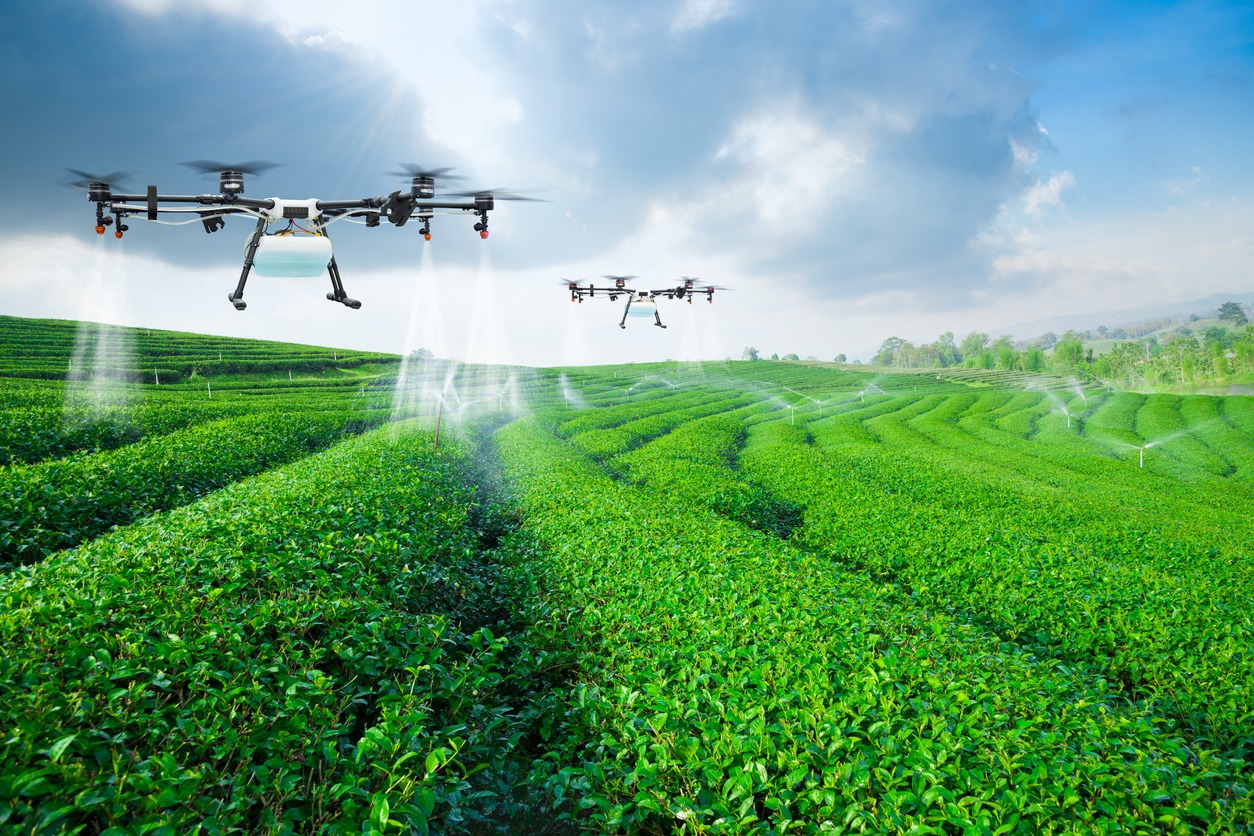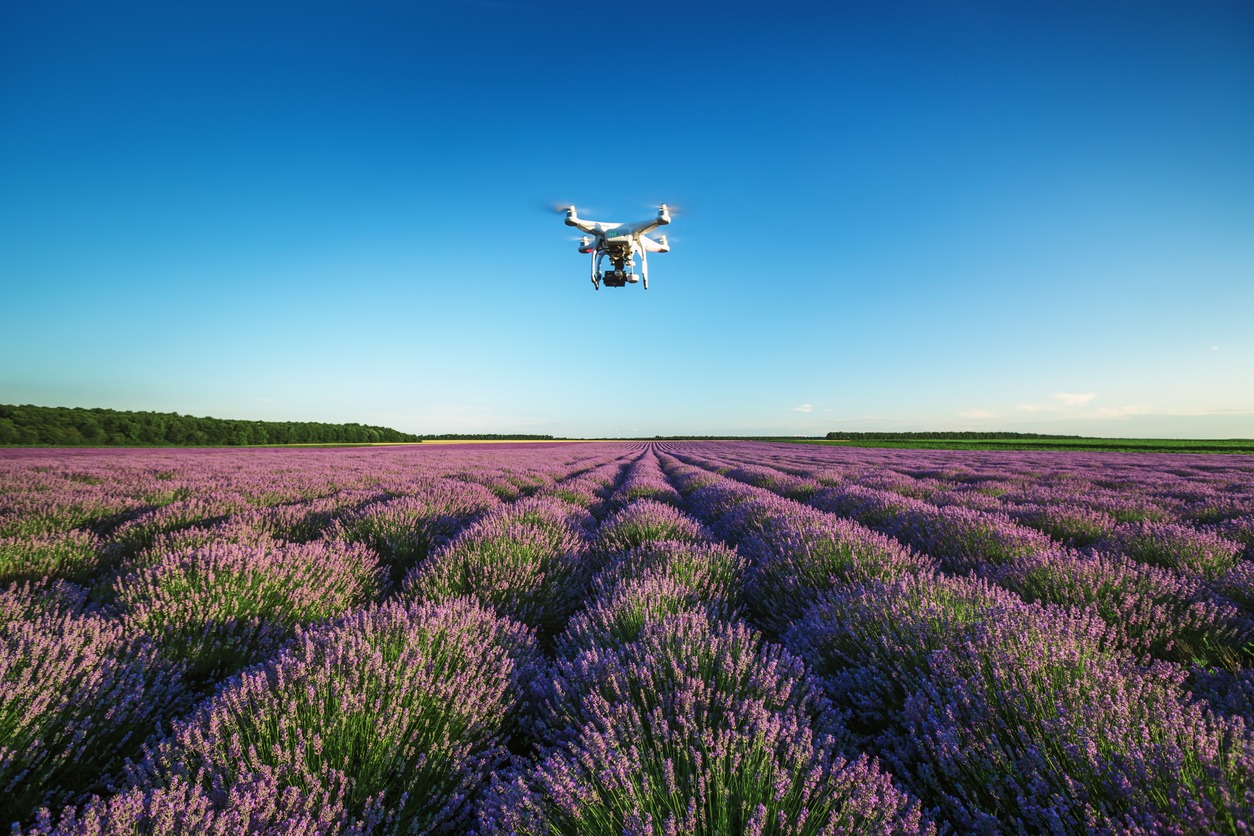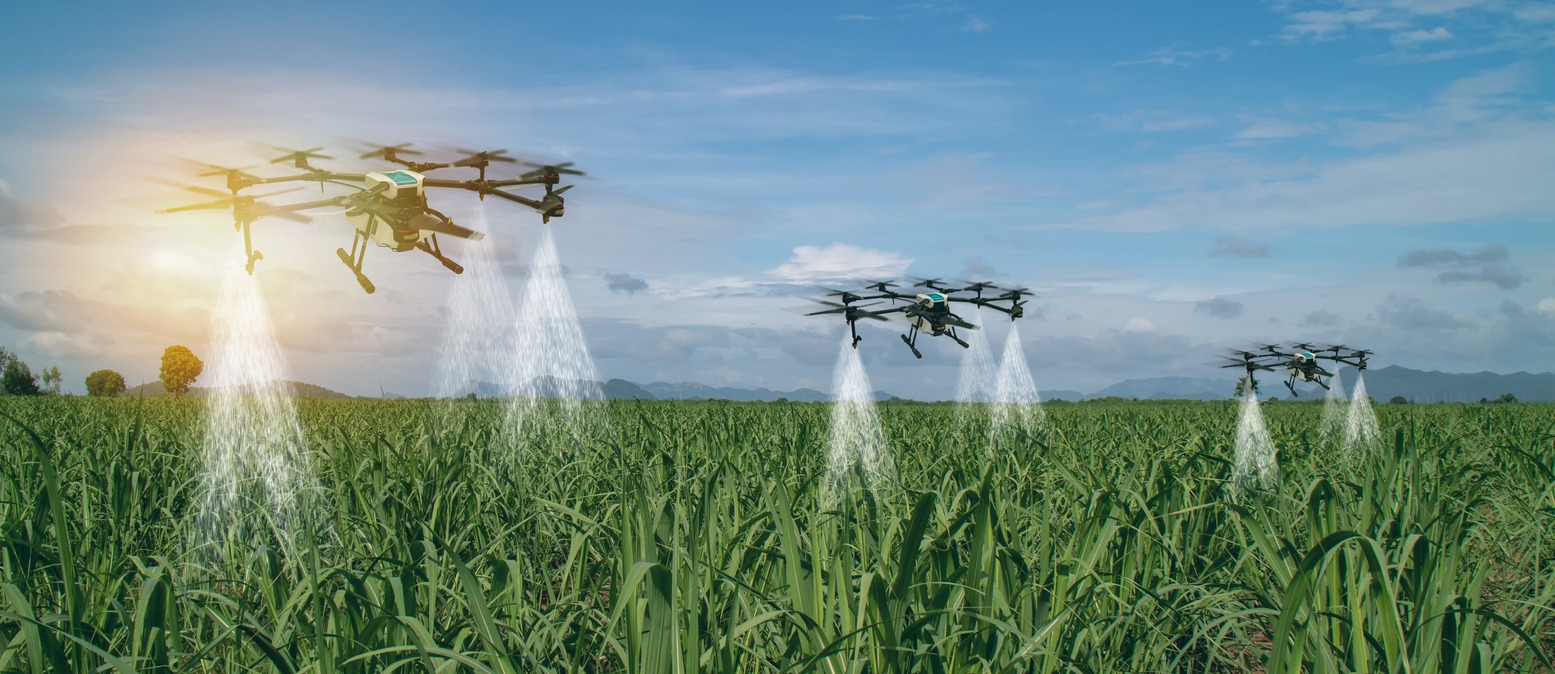In agriculture, productivity, efficiency, and profitability are top priorities. Therefore, effective resource management becomes crucial. Farmers and ranchers are increasingly turning to technological solutions like agricultural drones to meet the demands of a changing climate, potential supply chain disruptions, and the constant threat of weather and crop diseases.
Drones can provide high-resolution imagery, ground heat mapping, and other innovative technologies. The Federal Aviation Administration (FAA) recognized the potential of drones in agriculture in 2015, granting exemptions for their use. Since then, agricultural drones, or “ag” drones, have evolved, incorporating advanced features like 3D imaging for estimating crop height.
As precision agriculture grows, drones have become indispensable in farm operations, helping farmers manage their crops effectively and make better business decisions.
In this article, learn about the benefits of using drones in agriculture.
Drone Technology in Agriculture
From delivering real-time data to promoting the health of plants, drones – known as unmanned aerial systems (UAS) – are literally helping grow more plants.
As the global population surpasses 8 billion, experts anticipate a need to double food production by 2050. While there is technically enough food to feed everyone, challenges arise as an additional two billion people will require sustenance. Meeting this demand without expanding agricultural land is a significant challenge. Estimates suggest a need for a 60-100% increase in global food production – without updating current agricultural practices, it would require clearing vast areas of land, including rainforests and savannas. Of course, this has detrimental effects on climate change.
Here’s where the concept of precision agriculture becomes crucial. Drones are leading the charge in this movement. Precision agriculture uses technology to precisely measure and study crop production, helping farmers make informed decisions about their crops. This technology has already become integral to large-scale precision farming operations, providing valuable data that helps plan planting and treatments for optimal yields.
The data collected through these observations improves crop and farm management, increasing production yields without consuming more land. In the face of the world’s growing food demands, drones are pivotal in steering us towards a more sustainable and productive future.
The widespread adoption of drones is transforming various industries, but its impact on agriculture is particularly noteworthy. The agricultural drone market, which was valued at $1.2 billion in 2019, is projected to soar to $4.8 billion by 2024. In just a few years, drones will become commonplace on both large and small farms, playing roles in tasks ranging from scouting to security.
Reports suggest that employing precision farming systems, often drone-collected data, can boost yields by up to 5%, a substantial increase in an industry where profit margins are typically slim.
Benefits of Drones for Agribusinesses
Regardless of the scale of their operations, many farmers, ranchers, and vineyard owners are leveraging drones to enhance and streamline their agribusiness endeavors. Here’s how drones are making a difference:
It saves time
Managing land, crops, stables, and livestock is hands-on, time-consuming work. Drone technology offers real-time, in-depth results, providing high-definition photos, videos, and data within minutes. This bird’s-eye view enables quick identification of crop issues and safety concerns and allows for prompt action.
It helps troubleshoot problems.
Drones are valuable for proactive issue monitoring. Instead of discovering problems too late, agribusiness owners can use drones to inspect critical areas, such as irrigation systems, for potential leaks or damage. The technology can even be employed for water sampling to detect contaminants, reducing risks to crops, livestock, and consumers.
It provides better data and cost savings.
Drones outshine traditional satellite imagery by scanning large plots in shorter periods and at a lower cost. High-resolution drone imagery offers detailed insights into crop growth, health, and soil moisture. This informed decision-making can help you save money and improve efficiency.
It improves health and safety.
Drones help improve safety by mapping potentially hazardous areas without risking worker safety. After adverse weather events, drones can assess damage quickly, which can help expedite the insurance claims process. For livestock monitoring, drones equipped with thermal imagery help identify sick or injured animals.
It helps reduce the environmental impact.
Precision spraying by agriculture drones minimizes environmental impact by applying targeted treatments of pesticides and fertilizers. This approach reduces runoff and chemical drift, benefiting nearby crops and soil. Additionally, using drones for spot jobs instead of traditional full-field sprayers decreases air-polluting emissions and lowers input costs for farmers.
Agricultural Uses for Drones
Agricultural drones are pivotal in helping farmers keep a close eye on their crops and livestock from the skies, aiding in proactive problem-solving and efficient field management.
Depending on the specific task at hand, drones can be equipped with various attachments such as sensors, camera lenses, hooks, sprayers, and even small buckets for sample collection. The data collected by these drones is then transmitted back to a tablet or computer, providing valuable information and images of land, crops, and livestock.
The functions of agricultural drone services are diverse and include:
Scouting and Monitoring Plant Health
Drones are proving to be incredibly successful in monitoring plant health, and one standout application is using specialized imaging equipment known as the Normalized Difference Vegetation Index (NDVI). Equipped with this technology, drones analyze detailed color information to indicate the health of plants. This allows farmers to keep a close eye on crop development, addressing any issues promptly to ensure the well-being of the plants. The image below simplifies the process of how NDVI functions.
In addition to NDVI-equipped drones, those with regular cameras are also used for monitoring crop health. While many farmers rely on satellite imagery for this purpose, accessing such data can be costly and less effective compared to the close-up imaging capabilities of drones.
Drones flying in closely to fields reduce the impact of cloud cover and poor lighting conditions. While satellite imaging offers meter-level accuracy, drone imaging takes precision to the millimeter. This level of detail allows farmers to spot stand gaps after planting so they can replant as needed.
This technology can also help quickly identify and address disease or pest issues. Drones with high-resolution cameras can spot weed infestations early, even in expansive fields. Swiftly addressing weed problems ensures your crops receive the nutrients, light, and space they need.
Monitoring Field Conditions
Drones are also effective in monitoring soil and field conditions. Accurate field mapping allows farmers to identify irregularities in the field. It includes checking field elevation, which can help determine drainage patterns and locate wet or dry spots, leading to more efficient watering.
Some agricultural drone retailers and service providers go the extra mile by offering nitrogen level monitoring in the soil through enhanced sensors. This precision allows farmers to apply the exact amount of fertilizer needed in the right location, avoiding poor growing spots and improving soil health in the long run.
Planting and Seeding
A relatively newer and less widespread use of drones in agriculture involves planting seeds. Yes – drones can do the planting for you! Automated drone seeders are currently gaining traction, particularly in the forestry industry. The potential for broader use is on the horizon, as planting with drones allows for reseeding hard-to-reach areas without risking workers’ safety. Operating with a team of two operators and ten drones, these automated seeders can efficiently plant up to 400,000 trees a day!
Spray Application
Drones can also be used to apply spray treatments. This application has gained widespread popularity in Southeast Asia. These drone sprayers reach challenging areas, like steep tea fields at high elevations, saving workers from navigating such terrains with backpack sprayers. Drone sprayers deliver precise, fine spray applications that can be targeted to specific areas, maximizing efficiency and reducing chemical costs.
However, regulations for drone sprayers vary widely between countries. In Canada, for instance, they are not currently legal due to ongoing testing to understand the impact of spray drift. Some proposed regulations suggest that only trained professionals, as seen with Yamaha, should operate spray drones, offering leased services complete with licensed operators.
Security
Drone security, a rapidly growing industry beyond agriculture, proves highly beneficial for farm management. Drones serve as efficient monitors for the farthest corners of a farm, saving time and enabling more frequent checks of hard-to-reach areas. Throughout the day, drone cameras provide an overview of farm operations, ensuring smooth function and helping locate equipment in use.
Security drones can also be deployed to monitor fencing and perimeters, particularly for valuable crops like cannabis, reducing the need for additional security personnel.
Drone cameras are also playing a role in protecting farm animals by locating missing or injured herd members in distant grazing areas. What used to take hours of walking can now be accomplished in a few minutes.
Drone Pollination
Drone pollination technology is one of the newer agricultural uses for drones, and some are still in testing and development. Researchers in the Netherlands and Japan are working on small drones capable of pollinating plants without causing damage. The ultimate goal is to create autonomous pollinating drones that can work independently, monitoring crop health without constant guidance from operators.
Drone AI
Advancements in drone technology are not limited to hardware – there’s also a focus on machine learning. Enhancing Artificial Intelligence (AI) in drones is crucial to making them more accessible and beneficial for smaller farmers in developing nations. While existing drone technologies excel at monitoring well-known crops like corn, typically found in large monocultural fields, they face challenges in recognizing areas with diverse crops, lesser-known produce, and grains that look similar throughout their growth stages. As a result, current drone monitoring programs are less effective in tracking the growth and health of these crops.
Further efforts are required to train AI systems to recognize less common crops and diverse planting patterns so drones can be valuable for all types of agriculture.
Looking to the Future
Ongoing research and innovation continuously open new avenues for drones to contribute to agriculture. In Japan, scientists have developed insect-sized drones capable of pollinating flowers, mimicking the role of bees. These drones utilize GPS to choose optimal flight paths for pollinating plants in a given area, potentially serving as replacements for dwindling bee populations.
In early 2020, a Canadian team announced the creation of a drone designed for tree planting. The team successfully propelled small seed pods into the ground using a pressurized air cannon. They estimate that a single drone operator could plant 100,000 seed pods per day, with the ambitious goal of planting one billion trees by 2028.
The agricultural community is only beginning to tap into the vast potential of drone technology. As research progresses and engineers find innovative ways to integrate aerial data collection into farming operations, we can expect significant leaps in crop production.
Conclusion
Drones have already made significant changes to the agricultural industry, and their influence is expected to grow further in the future. While drone applications are becoming more beneficial for small farmers, there is still progress needed before they become a standard part of every farmer’s toolkit, especially in developing nations.
Many countries need to establish and update drone use regulations, and additional research is necessary to assess their effectiveness in specific tasks, such as pesticide application and spraying. While drones offer numerous advantages to farmers, it’s crucial to recognize their limitations and functionalities before investing in costly equipment.




